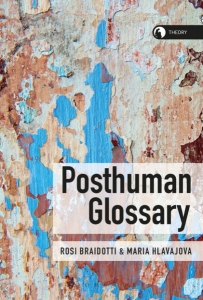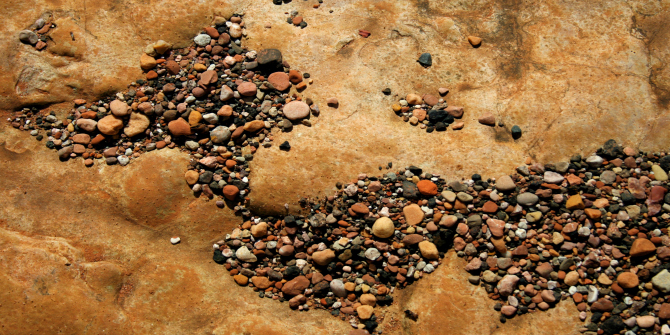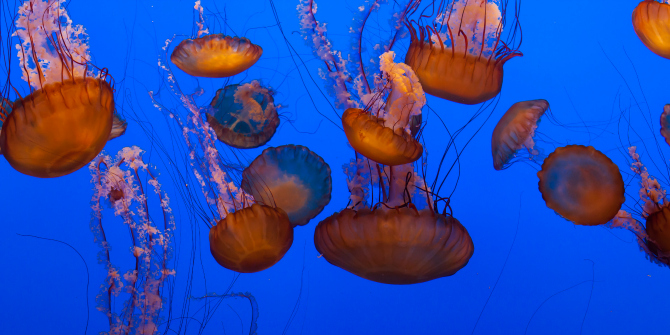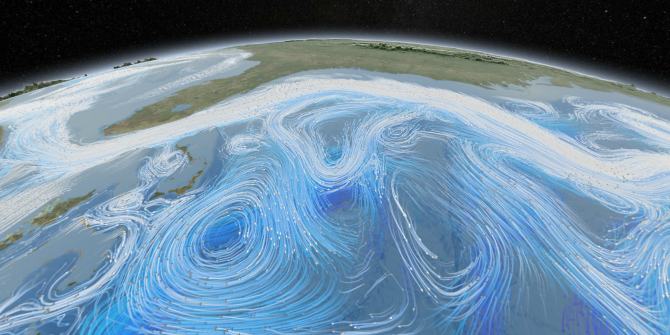With Posthuman Glossary, editors Rosi Braidotti and Maria Hlavajova bring together a comprehensive and diverse range of entries that make an emphatic intervention in posthuman scholarship, offering neat summaries, exploring new applications and challenges and suggesting intriguing conceptual networks. The product of significant, collective intellectual and adminstrative labour, this ensemble piece will be a catalyst for research, activism and the formation of new ethical communities, writes Jodie Matthews.
Posthuman Glossary. Rosi Braidotti and Maria Hlavajova (eds). Bloomsbury. 2018.
 Find this book (affiliate link):
Find this book (affiliate link): ![]()
‘Theory is back!’ Rosi Braidotti exclaims, with typical clarity, in the preface to Bloomsbury’s Theory series, of which this volume forms part. From Affective Turn to Zombie, the entries in Braidotti and Maria Hlavajova’s comprehensive and diverse Posthuman Glossary gracefully enact theory’s return. The collection marks a significant moment in critical theory and makes an emphatic intervention in posthuman scholarship.
Braidotti and Hlavajova’s introduction to the Glossary is an erudite summary of the field. They signal the importance of the glossary form by suggesting that as part of ‘Generation Anthropocene’, scholars and artists working today require ‘new notions and terms’ to ‘address the constituencies and configurations of the present and to map future directions’. Difficult ideas on the pages that follow should not be shied away from, because it is now time to think differently about our ‘current predicament’. The anthropocentric, gendered, heteronormative and white supremacist assumptions on which a scholarly or readerly ‘we’ and ‘our’ are traditionally grounded are repeatedly challenged throughout the Glossary in order to find new activist and ethical communities. Each entry serves not to close down the meaning of a term through rigid definition, but to open it up, map it and find powerful ways of using it.
Those already familiar with the terms outlined in the Glossary will find neat summaries, new applications and challenges as well as intriguing conceptual networks via the helpful ‘see also’ section at the bottom of each entry. For instance, Serpil Oppermann’s entry on Ecomaterialism also functions as an index for Anthropocene, In/human, Non-human Agency, Neo/New Materialism, (Material) Ecocriticism and Naturecultures. The intellectual and administrative labour required for this level of attention to detail, and to organise the work of over 100 contributors, should not be underestimated (a team of editors and assistants are acknowledged), and it has paid off.
Image Credit: Cropped version of ‘Pebbles’ by Alan Levine licensed under CC1.0 Public Domain
There are big names for key concepts and emerging ideas in which those same figures have played a defining role. Jack Halberstam outlines Gaga Feminism as a form of queer anarchism. Donna Haraway uses ‘ugly words’ like Capitalocene – a boundary event in the killing of the conditions of ongoingness – and Chthulucene (from Greek etymological roots meaning now or ongoing and beings of the earth) to figure living-with and dying-with. Carey Wolfe moves away from a normative concept of the human in the important section on Posthumanism in order to assert that the nature as well as the object of thought must change for it to be posthumanist. Stills from John Akomfrah’s installation Vertigo Sea (2015) point to the collection’s commitment to including the arts in this field of study, as well as introducing ideas about whales and the whaling industry to the volume. However, to name just four contributions, or single out any at all, is really to do a disservice to this ensemble piece.
The collection is international in scope and authorship, though most (but not all) of the contributors cite institutional affiliations in North America, Europe and Australia. The cumulative bibliography, an indispensable reference work in its own right, runs to nearly 70 pages. The genealogy of this field of study is clearly detectable in the names particularly well-represented therein: Karen Barad, Gilles Deleuze and Jennifer Gabrys, to name a few.
The range of entries, from the technical to the philosophical, means that certain specific terms and familiar authors will no doubt be read more keenly than others when readers encounter such a large text – either because one expects to find particular ideas covered here or because they appear as a welcome surprise. The Glossary manages to include both the expected and unexpected. My own research interests meant that I jumped immediately to Ethel Brooks’s piece on the notion of the camp – the Romani camp, the refugee camp, the concentration camp. She outlines the ethical imperative of asking ‘who are the residents of camps, who constructs the camp and how are its residents, and the camp itself, imagined?’ It is an exhilarating piece, bursting with suggestions about the possibilities of the camp in rethinking ‘history and archive, space and nature, protest, resistance and critique’. With media images of refugee and migrant camps, be they of Cox’s Bazar, Dadaab or Lampedusa, fast becoming a horrifying icon of the twenty-first century, tracing ‘trajectories of eviction and expulsion, collateral damage and flight’ in order to rethink and reorganise state, sovereignty and citizenship is an urgent project. That such a project of opening up space for ‘other subjects’ should find a place in this collection speaks to the Glossary’s currency and engaged politics.
The Camp directs the reader, intuitively and explicitly, to Daniel Baker’s entry on Nomadic Sensibility. This focuses on the experience of Roma people with the possibility of privileging ‘social connection over geographic belonging’. A history of ‘life at the edge of the state’ has, Baker suggests, led to a Roma cultural understanding of the value of the makeshift, of movement and simultaneity, transition and adaptability. This understanding may be perceived in a Roma aesthetic and in what he terms Roma visuality: ‘the collective qualities embedded in objects and artefacts that originate from, or circulate within Roma communities’. Two entries by Romani scholars that embed a rigorously-theorised approach to Romani/Roma experience in a work mapping the contours of the ‘Anthropocenic social imaginary’ advance Romani Studies and the Humanities more broadly as much as they do posthuman scholarship.
The Glossary, in its discussion of ideas as varied yet connected as Necropolitics, Geopolitics and Placenta Politics, Food, Static Glow and Literature of Liberation, seems certain to become a standard guide to the field, but also a catalyst for new research and, in the spirit of the ideas discussed, activism invested in the ethics of our ongoingness.
Note: This review gives the views of the author, and not the position of the LSE Review of Books blog, or of the London School of Economics and Political Science. The LSE RB blog may receive a small commission if you choose to make a purchase through the above Amazon affiliate link. This is entirely independent of the coverage of the book on LSE Review of Books.









1 Comments